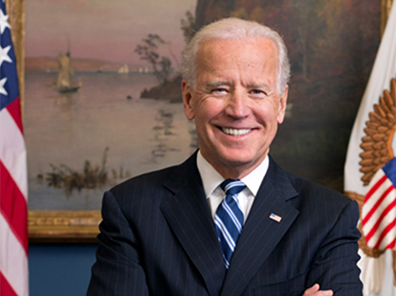
Part of the reason the Biden administration is struggling to control illegal migration at the Southwest border is that migrants are now coming to the border from farther abroad than they have in the past. For example, in the first three months of FY 2022, Border Patrol agents at the Southwest border have apprehended more than 58,500 Venezuelan nationals, up from fewer than 48,000 in all of FY 2021. The president is responding to those entries by taking a page from the Trump playbook.
Changing Demographics in Illegal Immigration. Traditionally, nearly all illegal migrants at the Southwest border were Mexican nationals, and almost exclusively single adult males coming to work. Beginning in FY 2014, the number of migrants who were not Mexican nationals (OTM) surged, accounting for more than half of Southwest border apprehensions.
Still, even at that point, nearly all OTMs were from the three “Northern Triangle” countries of El Salvador, Guatemala, and Honduras. By FY 2019, nationals of those Northern Triangle countries made up more than 71 percent of all Southwest border apprehensions.
FY 2021 saw a new and disturbing trend: The rise in OTM and “other than Northern Triangle” (ONT) illegal migrants at the Southwest border. Border Patrol apprehended 367,275 OTM/ONT aliens there last fiscal year, 22 percent of the total.
That trend has gotten even worse. Of the nearly half-million illegal migrants apprehended by Border Patrol at the Southwest border in the first three months of FY 2022, almost 180,000 — more than 36 percent — were OTM/ONTs.
More Venezuelans Are Entering Illegally. Almost a third — 32.5 percent of those long-distance illegal migrants were from Venezuela. Well, they were originally from Venezuela, at least.
On January 31, the Washington Post reported that some have been living in Colombia, as have nearly two million of their countrymen, for a while. They are part of a diaspora from Venezuela of nearly six million, according to the United Nations. That latter figure seems high to me, but under the Hugo Chavez and Nicholas Maduro regimes, Venezuela has become an “economic basket case”.
The Sydney Morning Herald reports:
Inflation in Venezuela is rampant. It has led to a chronic shortage of food and goods, medicine and power, all of which is contributing to widespread unrest. An unmanageable crime wave keeps people locked indoors at night, while patients are dying due to a lack of simple, inexpensive medicines and equipment in hospitals.
The United States does not currently have diplomatic relations with the Maduro government. Instead, it recognizes “Interim President” Juan Guaido, who is also Venezuela’s representative to the Organization of American States. The State Department asserts (and not without reason) that Maduro “illegitimately usurped a second presidential term” from Guaido in January of 2019.
The problem is that any passports or travel documents that Guaido were to issue would not be recognized in Venezuela, where Maduro controls the “facts on the ground”. That means DHS would have to send any Venezuelan that it removes or expels someplace else.
Biden’s Plan — and Trump’s. Which brings me back to Biden’s plan. In October, Secretary of State Tony Blinken negotiated with the government of Colombia to accept Venezuelans removed from the United States, in the Post’s terms “promoting a regional approach to managing migration pressures”.
If that sounds familiar, it's because that’s what the Trump administration attempted to do when it began implementing what were termed “bilateral and multilateral asylum cooperative agreements” with the Northern Triangle countries in November 2019.
Bilateral and multilateral asylum cooperative agreements are better known as “safe third-country agreements” and would have allowed the United States to share the load of its asylum-seeking illegal migrants with El Salvador, Guatemala, and Honduras.
The Biden administration suspended and terminated those agreements, but apparently Blinken is having a change of heart.
The Post reports that the Biden administration will start returning Venezuelan nationals who had previously been resettled in Colombia to that country this week, and has already expelled a grand total of two there pursuant to CDC orders issued under Title 42 of the U.S. Code in response to the Covid-19 pandemic.
WaPo also says that ICE will start sending other Venezuelan nationals to Colombia “on a regular basis”, though how many and how regularly remains to be seen.
Clouds on the Horizon. The success of this program is clouded by the fact that immigrants’ advocates are already unhappy with the rather weak steps that the Biden administration has taken in response to the unprecedented border crisis (or been forced to take, in the case of the Migrant Protection Protocols, better known as “Remain in Mexico”).
The New Yorker on January 28 ran a profile of one “disillusioned” Biden staffer who has left the administration in a fit of pique. Her departure is part of a tug-of-war between immigration “idealists” in the White House and political realists. The realists have more power, but thus far the idealists have had the upper hand in crafting Biden’s border policies. That may change, but I will believe it when I see it.
Cautiously Optimistic. In any event, I remain hopeful. When it comes to Venezuelan migrants who had been resettled in Colombia, Biden has apparently come around to the book of Trump — in a fashion. This latest State Department move is more of a single page from that book than even a chapter, but any action to deter illegal migrants is a good one.
